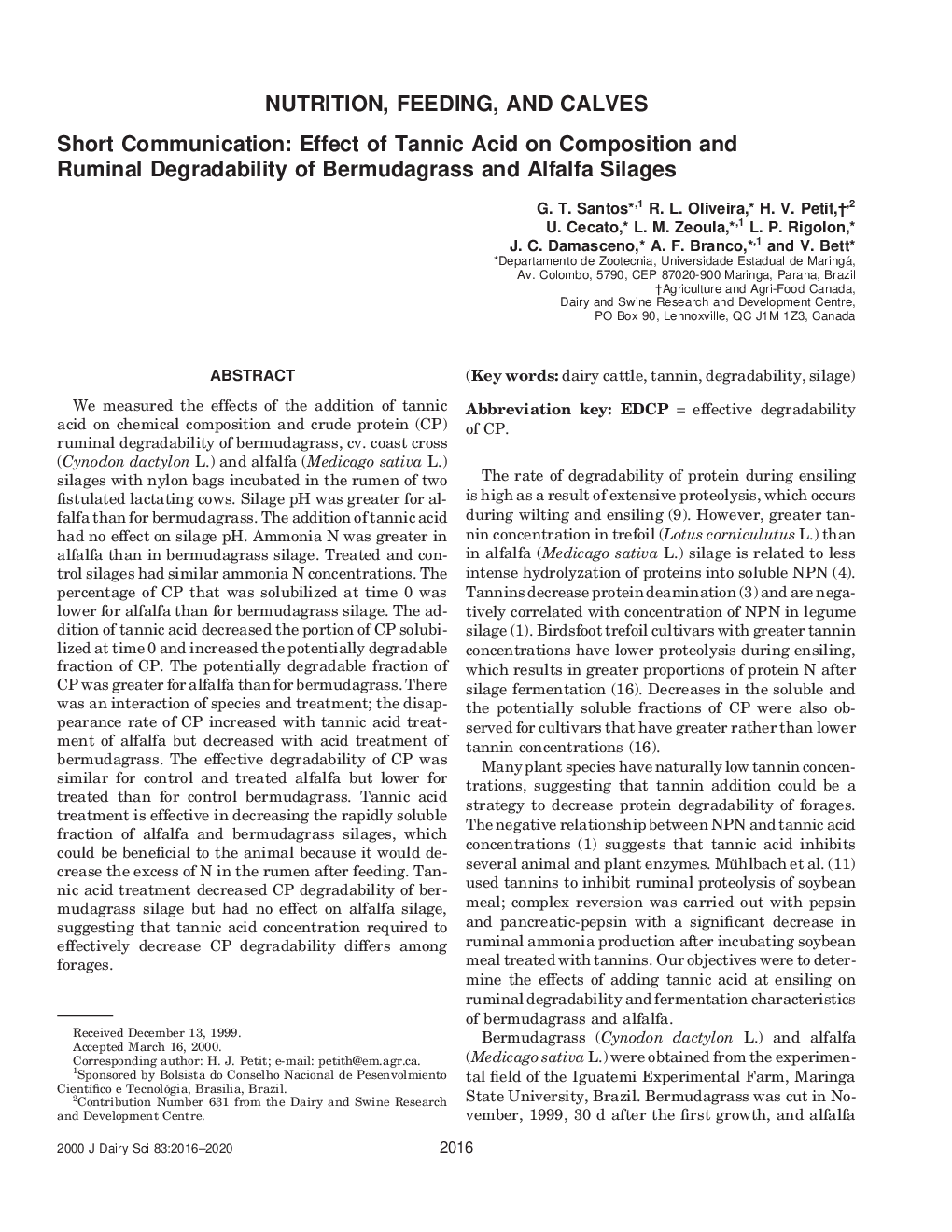| Article ID | Journal | Published Year | Pages | File Type |
|---|---|---|---|---|
| 2443509 | Journal of Dairy Science | 2016 | 5 Pages |
Abstract
We measured the effects of the addition of tannic acid on chemical composition and crude protein (CP) ruminal degradability of bermudagrass, cv. coast cross (Cynodon dactylon L.) and alfalfa (Medicago sativa L.) silages with nylon bags incubated in the rumen of two fistulated lactating cows. Silage pH was greater for alfalfa than for bermudagrass. The addition of tannic acid had no effect on silage pH. Ammonia N was greater in alfalfa than in bermudagrass silage. Treated and control silages had similar ammonia N concentrations. The percentage of CP that was solubilized at time 0 was lower for alfalfa than for bermudagrass silage. The addition of tannic acid decreased the portion of CP solubilized at time 0 and increased the potentially degradable fraction of CP. The potentially degradable fraction of CP was greater for alfalfa than for bermudagrass. There was an interaction of species and treatment; the disappearance rate of CP increased with tannic acid treatment of alfalfa but decreased with acid treatment of bermudagrass. The effective degradability of CP was similar for control and treated alfalfa but lower for treated than for control bermudagrass. Tannic acid treatment is effective in decreasing the rapidly soluble fraction of alfalfa and bermudagrass silages, which could be beneficial to the animal because it would decrease the excess of N in the rumen after feeding. Tannic acid treatment decreased CP degradability of bermudagrass silage but had no effect on alfalfa silage, suggesting that tannic acid concentration required to effectively decrease CP degradability differs among forages.
Related Topics
Life Sciences
Agricultural and Biological Sciences
Animal Science and Zoology
Authors
G.T. Santos, R.L. Oliveira, H.V. Petit, U. Cecato, L.M. Zeoula, L.P. Rigolon, J.C. Damasceno, A.F. Branco, V. Bett,
